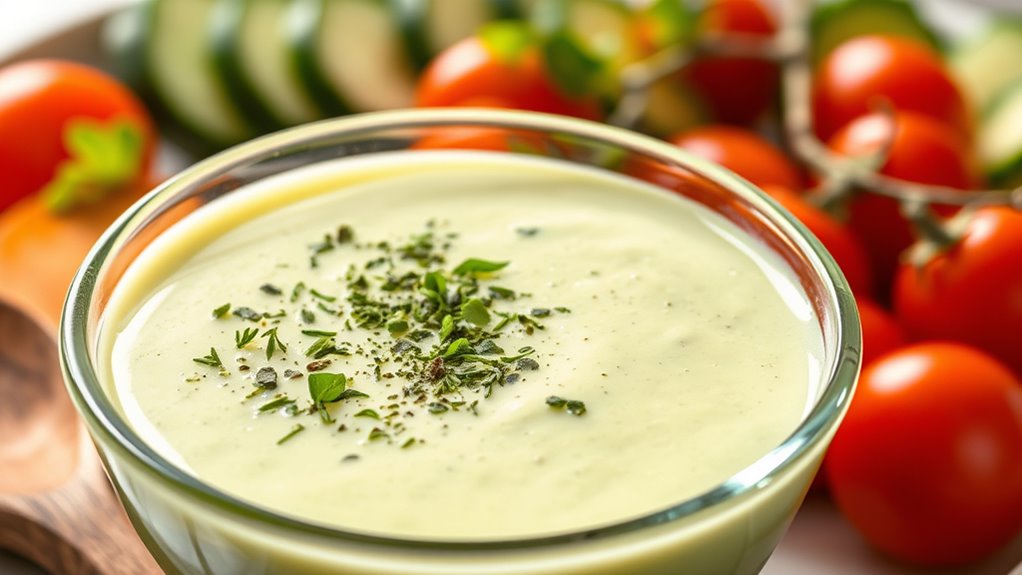A GERD-friendly salad dressing keeps fats gentle and acids mild, helping you enjoy greens without triggering reflux. Start with 2 tablespoons extra-virgin olive oil, 1 tablespoon lemon juice or lime juice, 1 teaspoon apple cider vinegar, and a pinch of salt; whisk until smooth. Optional: ¼ teaspoon Dijon or 1 teaspoon honey if tolerated. You can substitute olive oil with avocado oil and adjust texture with a splash of water. If you want more tips, you’ll find practical details ahead.
Ingredients and Quantity
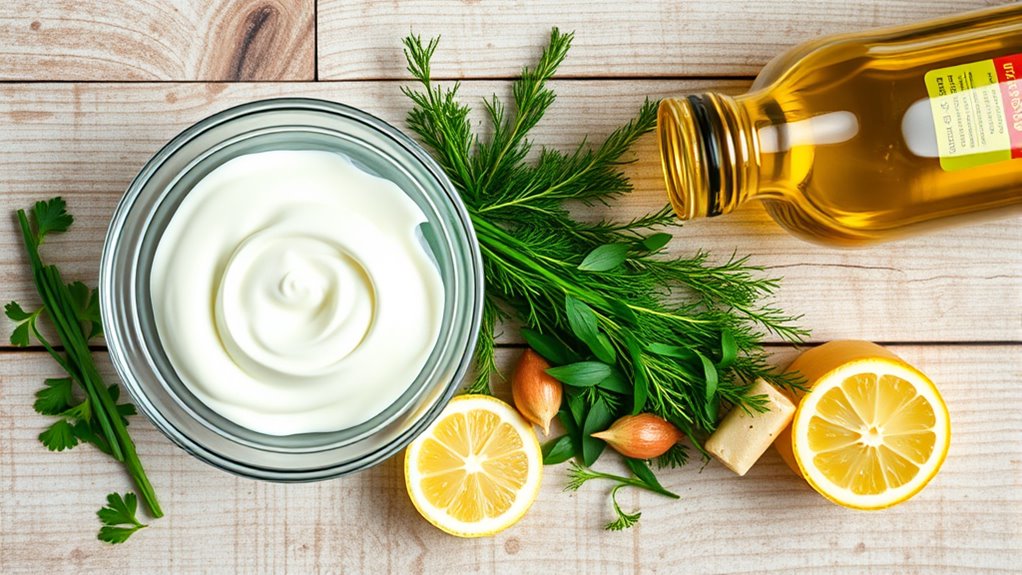
To make a Gerd-friendly salad dressing, gather a simple, gut-friendly mix: 2 tablespoons extra-virgin olive oil, 1 tablespoon lemon juice, 1 teaspoon apple cider vinegar, a pinch of salt, and optional options like 1/4 teaspoon Dijon mustard or 1 teaspoon honey if you tolerate it well.
| Primary ingredients | Notes on substitutions |
|---|---|
| Olive oil | Use avocado oil if desired |
| Lemon juice | Substitute lime juice |
| Apple cider vinegar | White wine vinegar alternative |
You’ll learn practical ingredient substitutions that keep dressings gentle yet flavorful. This evidence-based approach supports freedom in meals, focusing on symptom-friendly options. Salad dressings become a canvas for controlled complexity, not a barrier. Stick to minimal, tested swaps, and you’ll maintain consistency without flare-ups.
Preparations
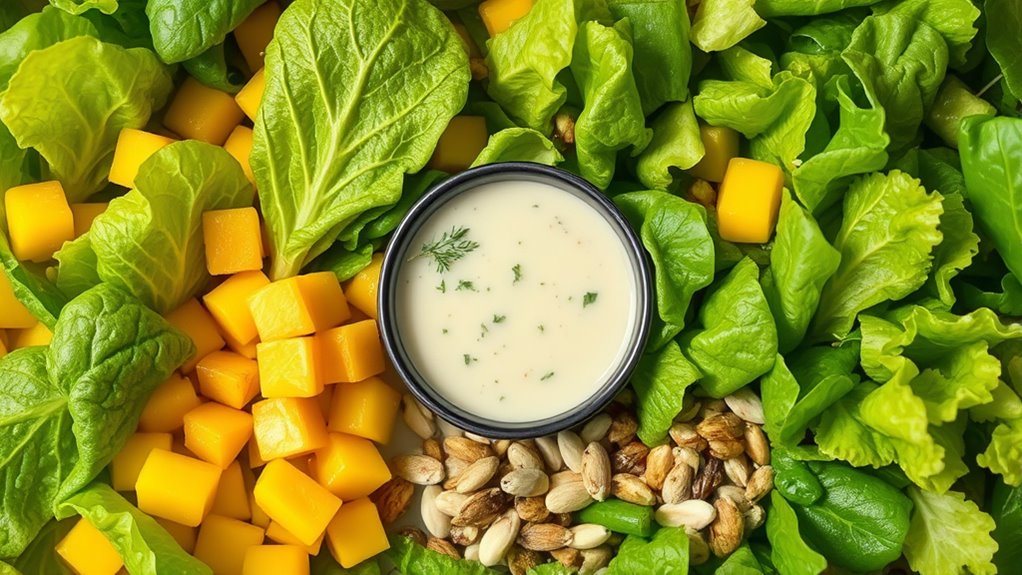
Preparing the dressing is straightforward once you’ve gathered the base from the previous step. You’ll focus on effective preparation techniques to guarantee consistency and digestibility. Start by whisking or shaking the base with a neutral liquid until smooth, then adjust texture with a splash of water or olive oil as needed. Emulsification matters: steady, small additions prevent separation and enhance mouthfeel. Taste as you go and document any tweaks for future batches. For flavor, consider subtle seasoning options that align with GERD-friendly needs, such as mild herbs, a touch of lemon, or a light splash of maple for sweetness without triggering reflux. Store in a sealed container, refrigerate promptly, and note shelf life. Maintain consistency, monitor acidity, and refine your technique with each preparation.
Kitchen tools or Kitchenware Required
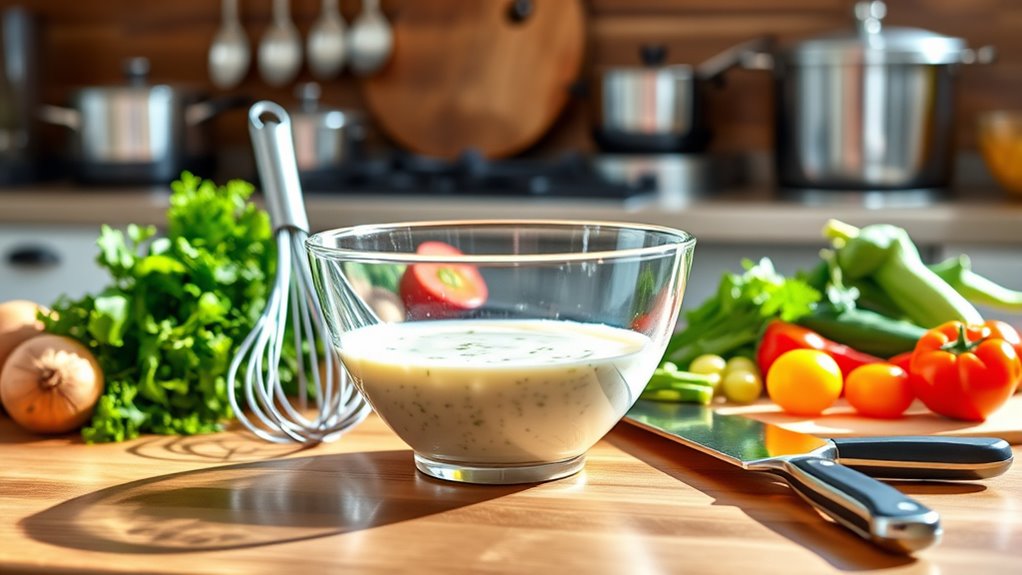
A few essential tools will make a GERD-friendly dressing easier to prep and more consistent. You don’t need fancy gear, just reliable basics that reduce mixing effort and improve texture. A salad mixer or dressing shaker helps emulsify fats and acids without extra strain, while a small whisk can be handy for quick whisk-and-pour tasks. A measuring cup and set of spoons guarantee precise flavor balance, and a stable bowl with a non-slip base keeps your workstation clean. Choose dishwasher-safe tools for easy cleanup, and opt for BPA-free containers for safety. Table below adds deeper meaning about selection.
| Tool | Reason |
|---|---|
| salad mixer | emulsifies well |
| dressing shaker | convenient storage |
How to Cook
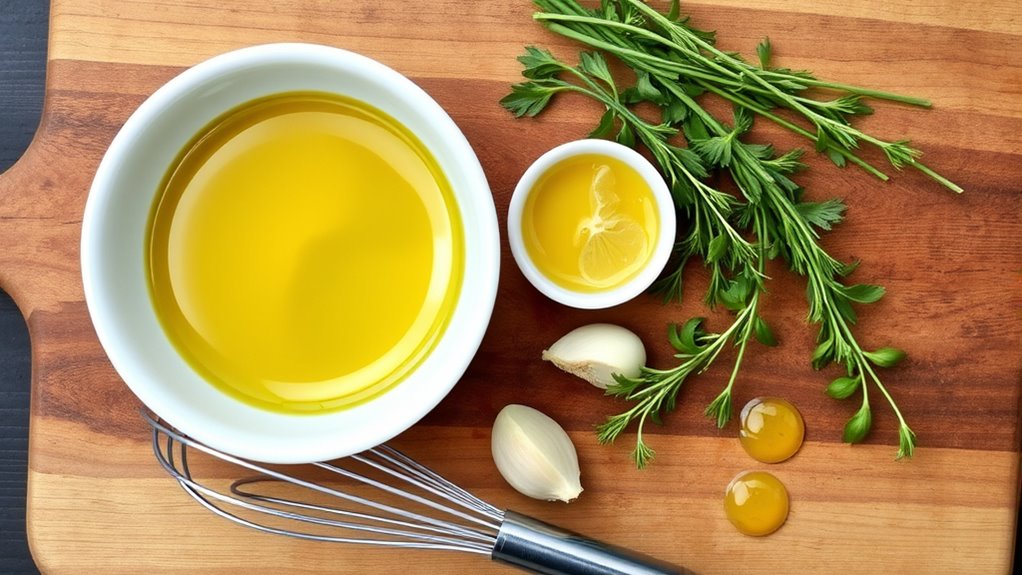
- Measure ingredients accurately to ensure proper balance.
- Whisk or blend ingredients until smooth.
- Use moderate heat only if the recipe requires warming.
- Remove from heat as soon as the mixture emulsifies to avoid scorching.
- Start with a base of olive oil or yogurt.
- Add acid in a balanced amount.
- Fold in flavor boosters like garlic sparingly.
- Let any warmed elements cool briefly before combining to prevent curdling.
- Rotate herbs, citrus zest, or vinegars for salad variations to maintain flavor without overloading digestion.
- Switch to a dressing alternative if a component feels off or doesn’t suit your tolerance.
- Always taste, adjust, and prioritize simplicity over complexity.
How to Serve
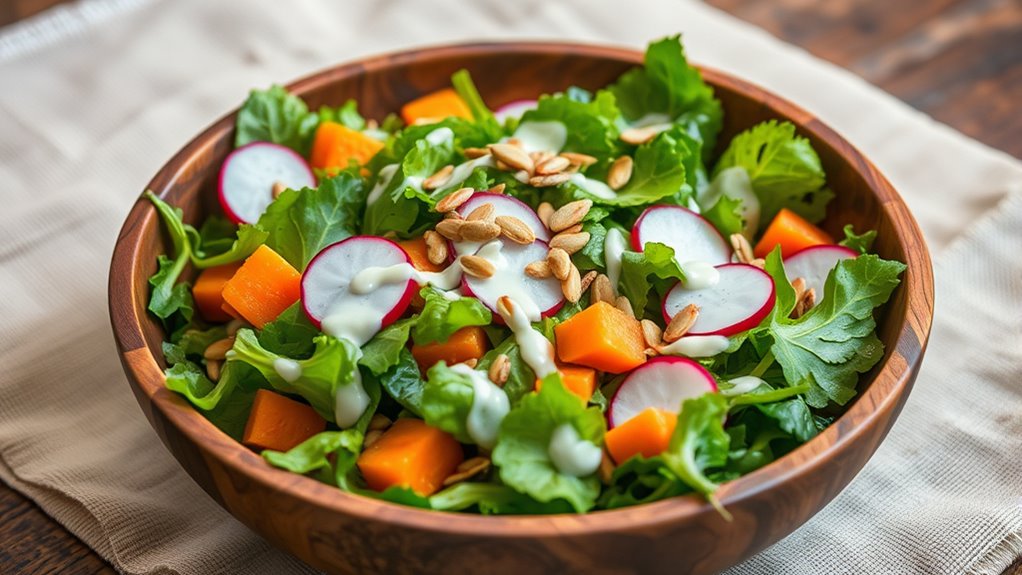
How you serve salads dressed with this recipe can impact both texture and digestion. Start with portions that let dressing cling without overwhelming greens, so you enjoy consistent mouthfeel bite to bite. Choose a bowl that distributes dressing evenly, then toss gently to coat without breaking delicate ingredients. For texture, add crisp toppings last to maintain crunch rather than soggy edges. Temperature matters: serve slightly cooler than room temp to support digestion and flavor perception. Pair greens with lean proteins or starchy add-ins in measured amounts to balance acidity. Presentation tips include arranging greens with visible dressing sheen, using contrasting colors, and avoiding excessive layering. Serving suggestions emphasize simple, practical plating that supports comfort, control, and enjoyment without complicating digestion.
Tips
To optimize digestion and enjoyment, keep dressing portions modest so greens stay crisp and coating remains even. When crafting tips, prioritize balance: aim for a single–to–two tablespoon portion per serving, enough to coat without drenching. Choose healthy fats to support satiety and flavor, such as olive oil, avocado oil, or a light tahini drizzle. For flavor enhancers, introduce lemon juice, Dijon, or a splash of vinegar that pairs with your greens without triggering reflux. Salt sparingly; salty flavors can mask sour notes that aid digestion. Embrace texture contrast—thin emulsions for smoothness, crushed seeds for crunch. Prepare in advance by whisking or blending and storing sealed, then shake before serving. Pair with mixed greens and vegetables for consistent digestion-friendly satisfaction.
Food Value and Benefit
This dressing offers a balanced combination of healthy fats and fiber, promoting steady digestion and sustained energy release.
Benefits of eating this recipe include:
- Supports steady digestion and slows gastric emptying for consistent energy levels
- Enhances nutrient absorption from vegetables due to healthy fat content (olive oil)
- Increases satiety, helping with appetite control and weight management
- Provides gentle acidity that may support digestive health without causing reflux
- Focuses on whole, natural ingredients, reducing reliance on additives for better overall health
Key vitamins and minerals in this recipe:
- Vitamin E (from olive oil) – an antioxidant that protects cells
- Vitamin C (from lemon and tomatoes) – supports immune function and skin health
- Vitamin K (from herbs and cucumber) – important for blood clotting and bone health
- Potassium (from tomatoes and cucumber) – helps regulate blood pressure and fluid balance
- Fiber (from cucumber, tomato, and herbs) – promotes digestive health and regularity
Enjoy this dressing in moderate portions, tuning into your body’s signals for optimal comfort and sustained well-being.
Frequently Asked Questions
Can I Substitute Olive Oil With Avocado Oil for GERD?
Yes, you can substitute avocado oil for olive oil for GERD. Avocado oil benefits include higher smoke point and mild flavor; oil flavor comparison shows avocado oil is lighter, less grassy, and typically gentler on reflux.
Are There Gluten-Free Thickeners for the Dressing?
Yes, there are gluten-free thickeners: cornstarch alternatives like arrowroot or tapioca, and xanthan gum. You can try small amounts, whisk well, and adjust. This evidence-based approach supports smooth dressings while preserving freedom to customize.
How Long Does It Stay Fresh in the Fridge?
Freshness lasts about 3–5 days in the fridge. For best dressing longevity, keep it tightly sealed and whisk before use. Store separately if possible, label, and monitor for off smells. salad storage guidance supports safe, savoring sips.
Is This Dressing Safe for Lactose-Intolerant Individuals?
Yes, this dressing is generally safe for lactose-intolerant individuals. Opt for lactose free alternatives if unsure, and prioritize digestive health by choosing dairy-free emulsions and thoroughly checking labels. You’ll gain confidence, freedom, and consistency in your meals.
Can I Freeze Dressing for Later Use?
If you want to freeze dressing for later, you can. For example, test-freeze a small portion, then thaw slowly. Use freezing techniques and dressing storage best practices; label, date, and store in airtight containers for safety and quality.
